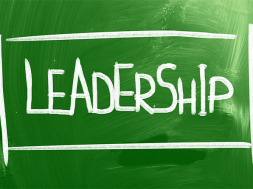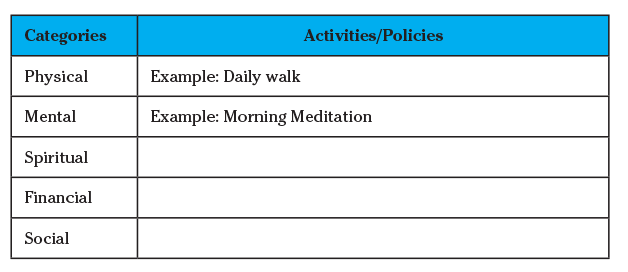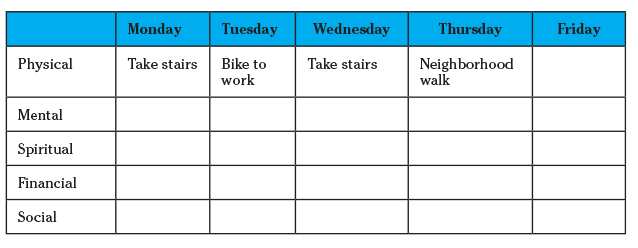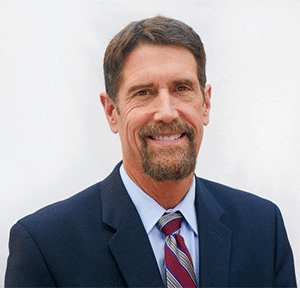
Well-Being During Crisis: Taking Care of People in Organizations
By Wallace K Pond, Ph.D., Executive Search Education Practice Partner, Top Gun Ventures
We know intuitively that the COVID-19 crisis has posed challenges to our mental health and overall well-being, but most of us are not aware of the extent of the problem. Even before the pandemic, we were more stressed than at any time since the American Psychological Association began tracking stress levels among Americans.1
The combination of mass shootings, climate change, and deep political divisiveness was taking a deep toll. The addition of the coronavirus crisis has presented further challenges and, as noted in a recent report on NPR, “as many as 75,000 more people will die from drug or alcohol misuse and suicide” as a direct result of the deleterious effects of COVID-19 on the mental health of Americans.2 If you are an executive, you are statistically more likely than not to be experiencing mental health challenges3 and the population at large has reached out to mental health counselors and therapists at more than double the normal rate since February.4
As Dr. Tom Insel, former Director of the National Institute of Mental health noted in a recent Newsweek article,
“We’ve never seen a moment where the demand for mental health care will be as great as it’s going to be in the next few months and next couple of years. If you add the spike in suicides and drug overdoses we are likely to see to those we were already expecting, the psychological toll from deaths of despair in the months ahead could very likely surpass the final mortality numbers for COVID.”5
In short:
- Those who had mental health issues before the pandemic are likely to have deeper challenges now.
- Many who had no mental health symptoms, now have them.
- We are spending more time in a fight or flight status, resulting in what is known as “stress response hyperstimulation,” which makes us more susceptible to anxiety and depression.
- Everyone is stressed out.
So, take a deep breath and know that, one, there are good reasons for feeling how you are likely feeling, and two, you are not alone! Moreover, and this is really important, consciously addressing well-being is essential to supporting the viability of organizations themselves. Doing so will build better resilience, dedication, and loyalty among the people that make organizations function, increasing the likelihood that they will survive and thrive going forward.
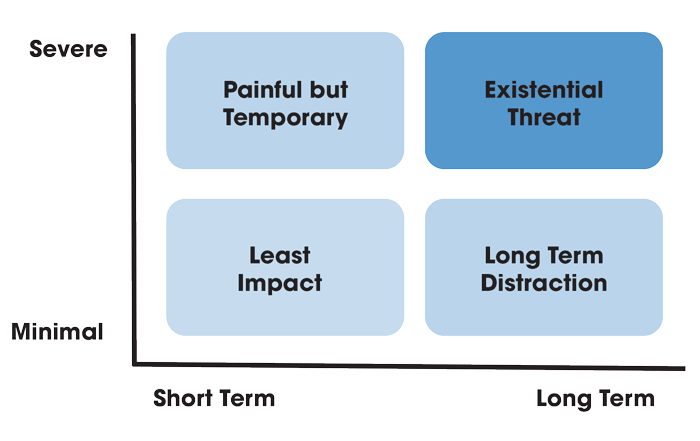 How does all of this relate to the workplace in general and higher education in particular?
How does all of this relate to the workplace in general and higher education in particular?
First of all, the crisis itself is extraordinary. It is severe, long-term, existential, and it will fundamentally change how we work and deliver education long after COVID-19 is resolved. It truly merits the phrase “unprecedented.”
Secondly, the crisis simultaneously turned our personal/family lives upside down as well, creating layers of intense challenges and stress – and for most people, that doesn’t even include the virus itself.
In the midst of this overwhelming reality, virtually everyone employed in any role in an institution of post-secondary education had to completely convert how they teach and serve their students, in many cases in the absence of appropriate technology, training, or time to prepare. On one hand, what was achieved was remarkable – and also unprecedented. On the other hand, this came at no small cost to the people involved – and it only offered a temporary bridge to close out the spring semester – many folks are doing it all over again preparing for the fall semester, but in a more sustainable way. And all of this is happening in the face of severe financial exigency across much of higher education.
Supporting well-being in a time of crisis
So, we know what the reality is, but what can we do about it?
Fortunately, as overwhelming as the challenges are, there are best practices for supporting well-being and wellness within organizations. We also know what the components are of healthy organizations.
Organizational health
Organizational health is not about performance, although achieving goals can support morale and community. Organizational health is about supporting the well-being of the people who make up the human element of the organization. Elements of a healthy organization include:
Transparency, honesty, fairness, support, collegiality, shared values and, importantly, recognition and support of the physical and emotional needs of the folks that make up the institution.
Organizational culture
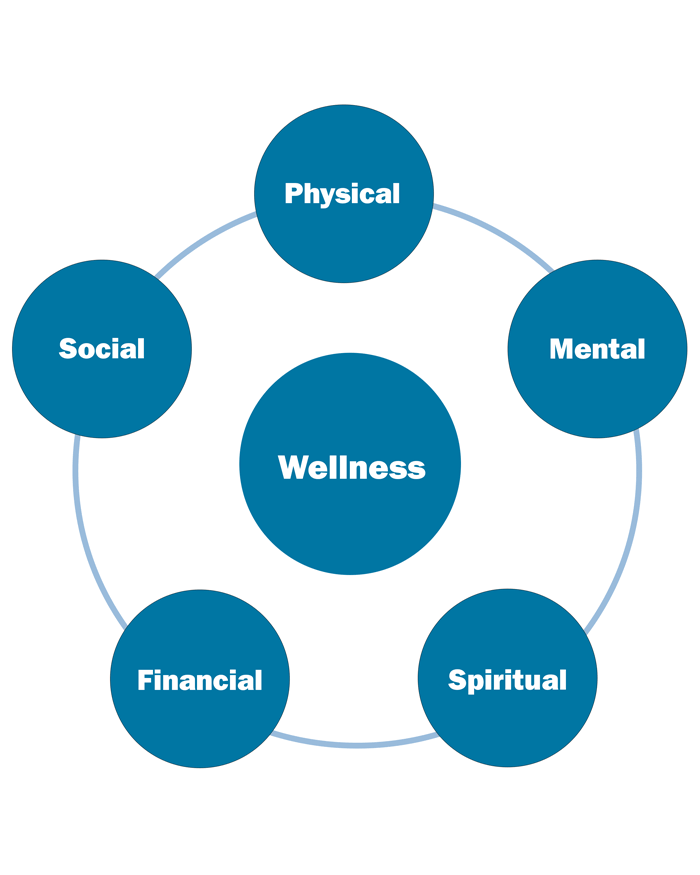 As with many other issues, in the absence of a culture that supports well-being, new efforts to do so will be compromised and likely not be sustainable. Some simple examples include things like actually believing that people are an organization’s greatest asset and treating them that way, supporting collaboration and collegiality, valuing autonomy and empowerment, and recognizing that in the current environment, there is no clear line between work and home life, so don’t expect it. Since culture is a leadership responsibility, the most fundamental element of well-being within an organization belongs to its leadership.
As with many other issues, in the absence of a culture that supports well-being, new efforts to do so will be compromised and likely not be sustainable. Some simple examples include things like actually believing that people are an organization’s greatest asset and treating them that way, supporting collaboration and collegiality, valuing autonomy and empowerment, and recognizing that in the current environment, there is no clear line between work and home life, so don’t expect it. Since culture is a leadership responsibility, the most fundamental element of well-being within an organization belongs to its leadership.
Wellness
Although there are multiple models for thinking about wellness, a simple one that I have used in the past involves five elements: Physical, Mental, Spiritual, Financial, and Social. We cannot separate mind, body, and spirit, either in our private lives or as it relates to wellness in the workplace.
It is within the purview and capability of leadership in all kinds of organizations to support these five domains and thus support wellness. In some ways, educational institutions are even more amenable than others to purposeful efforts to generate wellness. Assuming that that organizational culture is supportive, there can be policy prescriptions to directly support the domains of wellness described here, which will be discussed later in the article.
Strategies for supporting organizational health, wellness and mental health
Strategies for organizational health
Fortunately, the strategies for supporting organizational health are not complicated. Assuming a supportive culture and leadership, the key is simply making the commitment and executing on the effort. In a time of crisis, in particular, it is important to conduct non-business check-ins with employees. This can be at the beginning of meetings or through regular outreach, but the point is that there needs to be time dedicated to communicating with employees about how they are doing, separately from their work responsibilities. Other examples include providing time for mindfulness and physical health, without penalty for actually taking the time! It is also important to find opportunities for the celebration of things big and small, providing flexibility for “real-life” issues, and supporting social connection even if at a distance.
Strategies for stress
As simple as it is, one of the most important things leaders can do to help mitigate stress in their employees (and themselves) is to give permission to be human. As Kit Krugman, head of organization and culture design at qz.com recently noted, “Until recently, the predominant advice to managing your emotions at work was: Don’t have them … Ultimately, we allowed the guise of professionalism to eclipse the emotional experience of being human at work.”6 This Faustian pact was not sustainable even before COVID-19, but now it’s frankly dangerous. Other strategies include finding ways to provide stability and reduce fear and offering direct encouragement. This can be verbal or written communication. Hand-written notes are very powerful precisely because they have become so rare. Again, success depends on formally building time into the daily schedule to actually engage in these activities.
There are a number of other specific areas of focus to mitigate stress and support well-being in the workplace and at home. They include:
- Healthy diet
- Physical exercise
- Mindfulness
- Calming activities
- Positive relationships (and avoidance of toxic relationships)
- Minimal social media and news
- Emotional fidelity (simply allowing yourself to express what you feel)
- Gratitude
- Spiritual pursuits
Strategies for wellness
Based on the five-point model I shared above, there is a very simple process for supporting one’s own wellness, which requires identifying high level strategies for each of the five domains as well as a simple daily activity or two for each domain. It is not necessary to support every domain every day, but your goal should be at least one activity per week in each area. The tables below are an easy, low tech way to do this.
Policies for wellness
Within organizations, it is necessary to have policies and to devote resources specifically for wellness. It doesn’t work if it’s not purposeful. Some examples include unrestricted use of paid time off, paid time for wellness activities, i.e., supporting activities during the workday, and dedicated wellness resources such as employee assistance plans and health checks. Again, this is a leadership responsibility.
Interactions at work
Almost all of us are currently “on the edge.” We are more sensitive to triggers of all kinds, with less bandwidth to absorb negative interactions. Because of this, we all (and particularly managers and leaders) must recalibrate how we engage with others, regardless of the topic. When dealing with a “problem,” we must be even more thoughtful. For example, rather than beginning a discussion right away with the issue itself, 1) start from a place of empathy, being supportive, 2) then solicit feedback from the person about the issue at hand (and genuinely listen). 3) Only then address the problem or issue, with a focus on a positive outcome rather than on what is/was wrong.
The role of self-compassion
Something that is rarely spoken about, but essential to well-being, particularly during a time of crisis, is self-compassion. This literally means being kind to ourselves. The reason this is so important is because, in the absence of self-compassion, we cannot give ourselves the space to be vulnerable and authentic. We are also less likely to directly support our own well-being, which will make us much less capable of supporting others. We are socialized to be self-critical and to see self-care as “selfish,” which is disastrous in a time of crisis. You can find helpful tools at https://self-compassion.org/.
Supporting mental health
Lastly, in terms of being purposeful about organizational health and wellness, we cannot achieve high-level results unless we specifically acknowledge the mental health needs of the people in organizations, which, as mentioned at the beginning of this article, can literally be a life and death issue. This does not mean that managers and leaders (and everyone else) must play the role of a mental health provider. To the contrary. What is required is compassion and a commitment to creating an environment that overtly supports mental health. Some key examples include:
- Destigmatize mental health and put it on the same playing field as physical health.
- Recognize that wellness (and mental health) cannot be compartmentalized between personal life and work.
- End the absurdity of productivity (or worse, business) as worth and replace it with sustainable human values such as compassion, kindness, honesty, and integrity.
- Encourage people to seek help and support them once they do.
What followers need from leaders
In addition to the broad discussion about supporting well-being in organizations, there are very specific requirements and responsibilities for leaders. Global research by Gallup found that in times of crisis, in addition to the “nuts and bolts” of solving the problem and getting back to normal, employees have key emotional needs that they look to leadership to meet trust, compassion, stability, and hope. When those needs are met, employees are much better prepared to accomplish the hard work at hand.7
Leaders need to be seen as human themselves and be seen supporting humanity in the organization. They can do so by expressing vulnerability, authenticity, compassion, and empathy. Relative to organizational health and employee well-being, emotional intelligence is much more important than “executive” skills.
Doing right now will be your legacy in the future
As truly difficult as the current situation is, including distressingly hard decisions about how to use finite resources, the decisions that leaders make today will inform the organization’s legacy going forward. Those that stay true to core values and put people first will be rewarded in the future. Those that do not will pay a high price. As Mark Cuban noted in a recent interview, “The way companies treat their employees in times like these will be their defining feature in the coming months and years.”8
Conclusion
Everyone has a unique “emotional metabolism,” meaning that we process psychological distress at different rates and in different ways. Having said that, we are now experiencing near universal stress and challenges to our mental health, almost certainly unrivaled in modern times. Because our minds and bodies are inextricably connected, we are also experiencing physical symptoms and illnesses as well.
While no one would choose to be in the current crisis, it provides an opportunity to think much more boldly and purposely about how organizations can and should support the well-being of the people that comprise the humanity in them – and not just because it’s the right thing to do, but because it will also support sustainable community after we have transitioned from the heart of the COVID-19 crisis. As Brené Brown has noted, “either invest a reasonable amount of time attending to fears and feelings or squander an unreasonable amount of time trying to manage ineffective and unproductive behavior.”9 It is my personal hope that this crisis will permanently end the absurd and false notion we’ve lived under forever that being “professional” means giving up our humanity and that our personal lives and work lives must both be our top priority at all times. The Faustian pact was never sustainable. It just took a global pandemic to pull back the curtain on the fallacy.
And, importantly, as I noted in my recent webinar on Leadership in a Time of Crisis, managing crisis includes a moral imperative.10 Organizations that meet that test will not only enjoy a legacy worth having, but they will also be populated with human capital that is dedicated, loyal, and resilient, and that is a long-term legacy and competitive advantage that can only be earned; it can’t be bought.
—
I can assist institutions with recruitment of game changing leadership and with building the capacity to support wellness and overall well-being. To discuss what that might look like in your organization, contact me directly at wallace@topgunventures.com or at 303-386-7134.
Resources
- https://www.apa.org/news/press/releases/2019/11/americans-significant-stress
- https://www.npr.org/sections/health-shots/2020/05/13/850665769/act-now-to-get-ahead-of-a-mental-health-crisis-specialists-advise-u-s
- https://www.npr.org/sections/health-shots/2020/05/13/850665769/act-now-to-get-ahead-of-a-mental-health-crisis-specialists-advise-u-s
- https://www.businessinsider.com/coronavirus-anxiety-leading-people-to-online-therapy-2020-3
- https://www.newsweek.com/2020/06/05/mental-health-toll-coronavirus-could-rival-that-disease-itself-1506664.html
- https://qz.com/work/1841932/covid-19-will-change-the-standards-of-professionalism/
- https://www.gallup.com/workplace/304607/remember-needs-followers-during-covid.aspx
- https://www.cnbc.com/2020/03/25/coronavirus-mark-cuban-warns-against-rushing-employees-back-to-work.html
- https://daretolead.brenebrown.com/
- https://wallacekpond.com/stronger-safer-the-new-normal/
DR. POND, Education Practice Partner at Top Gun Ventures, has been a mission-driven educator and leader for over 30 years. For the last 20 years, Wallace has been a senior leader in higher education, holding both campus and system level positions overseeing single and large, multi-campus and online institutions of higher education in the U.S. and internationally. He has served as chancellor, president, COO, CEO, and CAO (Chief Academic Officer), bringing exceptional value as a strategic-servant leader through extensive experience and acumen in strategic planning, change management, organizational design and development, P&L, human capital development, innovation, new programs, and deep operational expertise among other areas of impact.
Wallace began his career as a high school teacher and adjunct professor, and spent six years in the elementary and secondary classroom working primarily with at-risk youth. He was also a public school administrator and spent another six years as a full time professor and administrator in the not-for-profit higher education sector, working in both on campus and online education, bringing education to underserved students. Additionally, Wallace has over 15 years of executive, private sector experience, creating a unique and powerful combination of mission-driven and business focused leadership and insights.
Dr. Pond has lived, worked, and studied in North America, Latin America, the Caribbean, Europe, Asia, and the Middle East. He has presented nationally and internationally and is the author of numerous articles and the books, “The Lights Are On, Is Anybody Home? Education in America” and “Leadership in the Real World.”
Wallace, a licensed pilot, has a BA in Spanish, an M.Ed. in Human Services and Human Resource Education, and a Ph.D. in Education.
Contact Information: Wallace K. Pond, Ph.D. // Education Practice Partner // Top Gun Ventures // 303-386-7134 // wkp@wallacekpond.com, wallace@topgunventures.com // www.WallaceKPond.com, www.TopGunVentures.com







